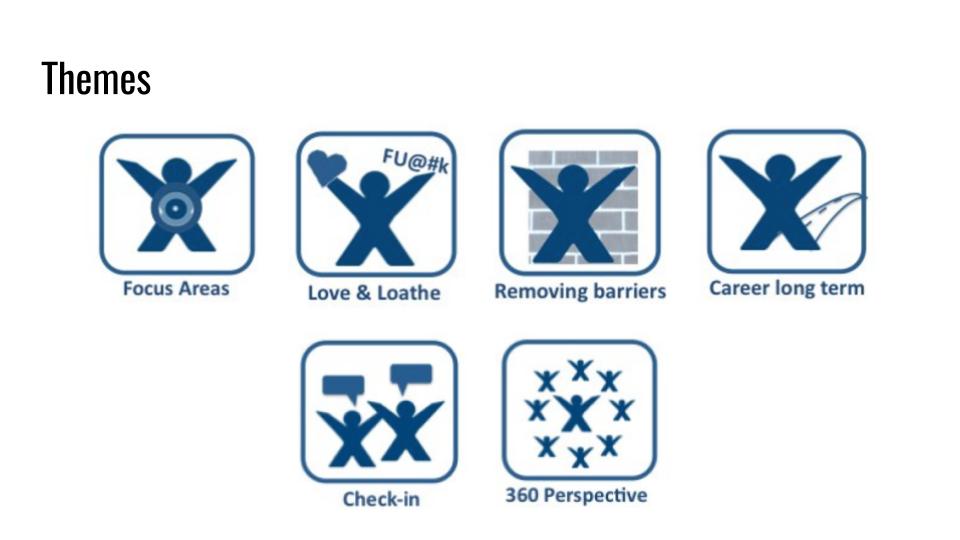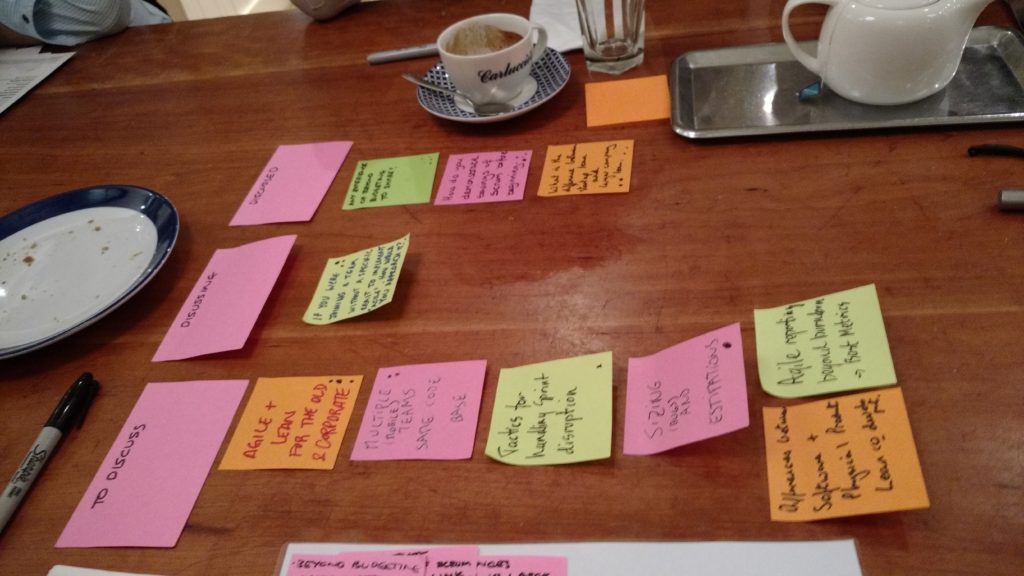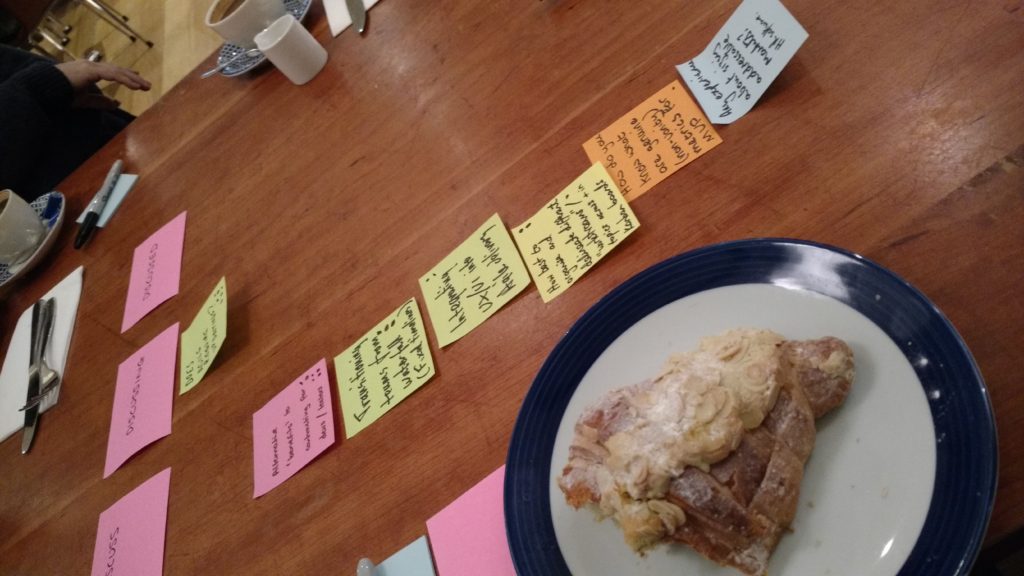
tl;dr No-one really likes performance reviews. But giving your team members good, actionable feedback and setting clear direction with them is very important. Yearly performance reviews don’t encourage this to happen.
Note: This is the first part in a multipart series of posts on performance management. In my team I changed how we do performance management. Future posts explain what changed and what happened as a result. This post sets the scene.
So What’s Wrong?
It’s fair to say that the traditional way of doing performance reviews is exactly that, traditional. Many companies work on a yearly cycle, with managers setting their people some objectives at the beginning of each year then reviewing them at the end. It’s likely that it’s been that way for ever. Sometimes if you are lucky then they’ll also be a mid year review.
I have a problem with this way of managing performance. We try to teach our teams to think in the present, to inspect and adapt their ways of working and the feature sets of products themselves, regularly and iteratively. Yet when it comes to the people we do the opposite. It doesn’t make sense.
The Problems With Performance Reviews
I’ve seen the following problems with the yearly review cycle in a number of companies that I’ve worked in. The same concerns and feedback every time.
The Forgotten Objectives Problem

Firstly there’s a huge gap between when someone is set some objectives and when those objectives are reviewed. Objectives get forgotten. A person’s goals and motivations change. The business landscape changes. You get to the end of the year, review the objectives and discover that none of the objectives that a person has are relevant anymore. The logical action when faced with this situation is to just ignore the objectives and review someone based upon feedback and your own personal viewpoint. Your team member gets the same performance score they did last year and then the whole cycle starts all over again.
In this situation you should think about the message that this is sending to your team member. You’re essentially saying “objectives aren’t really that important”. Don’t be surprised when you don’t get the buy-in next time objective setting comes around.
The Disruption Problem
When companies are tied to yearly performance review cycles then early December and late January are the periods that managers hate. Believe me, it’s where you really get to be the bottleneck. There’ll be expectations from HR that you do all your reviews by a certain deadline. It’ll be the same deadline as all the other managers have. Everyone will be running around trying to do the same things. Free meeting rooms will be pounced on by the first person who sees free space in the calendar. Everywhere will be full of people in groups of two talking quietly.
Preparing for a performance review is extremely important and a manager can’t just rock up to one without having prepared. There’s a lot to be done. Feedback to be requested, notes to be collated, memory banks to be queried to remember what happened almost twelve month’s ago, feedback to be re-requested, notes to write, the review itself and subsequent follow-up. That’s just for one team member.
A yearly review cycle effectively takes the entire management population out of delivery work for two months a year. It creates bottlenecks. It’s one big performance management big bang. That’s not how we deliver software anymore.
It’s also disruptive for the team members. Suddenly everyone is being asked to provide feedback on everyone else, everyone is preparing for their own reviews at the same time and because those reviews only take place once a year then they take a long time to complete.
Feedback Is Better When It’s Timely
There is nothing more annoying than being told “well that thing you did 6 months ago – that wasn’t good”. You have no chance to change the situation and little chance to effectively learn from the feedback. The time will have past and the opportunity to change may well have gone as you’ve moved onto something new.
Yearly performance review cycles don’t of course preclude managers from giving regular feedback to their team members. But they do make it easier not to give that feedback, and not to seek it from others. They subtly encourage us to think that ‘proper’ feedback is only needed to be given once a year. That’s wrong.
The Infrequent Problem
When you do something regularly then it becomes easier. You learn how to do it, your brain becomes wired to do certain parts of the activity almost without thinking, and you lose your fear of something new. Mastering a new skill and gaining the confidence to do it well takes time and practice.
We don’t get to practice the art of performance reviews regularly in a yearly cycle. At best a manager may well have done about ten reviews a year for a couple of years at a company. Those reviews come round only once a year, by which time a lot of the skills are forgotten or take time to become natural again. You make mistakes, those mistakes de-motivate your team members and just as you feel like you’ve got your review mojo back, then it’s time to put it away again for another year.
This also applies to your team members. They get reviewed once per year. In fact it’s worse – they get fewer opportunities to get good at reviews than you do.
It’s human nature to fear change and to feel anxious and apprehensive about something that is new. A yearly performance cycle becomes something that neither manager nor team member looks forward to, precisely because it happens so infrequently that no-one get’s the chance to feel confident doing it.
The “I’ve Forgotten What I Did” Problem
When reviews are yearly then it you can find yourself trying to remember what both you and your team members were doing almost twelve months ago. Even with the best notes in the world, and the most fastidious team members, there will be points that are forgotten.
Feedback from other team members and stakeholders won’t focus on what was done in the past – when under pressure to provide feedback for multi people (which happens more under a yearly cycle) then people remember the recent past far better than something that happened months ago. And if they do remember something from months ago then it was probably an event they perceived as negative. Bad memories stick better than good ones. The feedback you get will come with an unintentional negative bias. Or it may not even be true at all.
There’s a Long Lead Time
I’m a strong believer is delivering software iteratively, seeking regular and timely feedback, and adapting as a result. In my career I’ve done this enough times to feel that this is the least risky way to deliver. We learn as we go along, and we change approach, feature set, timescales, etc when required.
One key metric I like for a team is lead time. How long does it take us, from the point at which we receive a request, to the point at which we deliver it? Enabling a suitably short lead time to enable the team to be nimble and adaptive is key to delivering valuable software. A yearly performance management cycle has a lead time of exactly that, one year. The opportunity to adapt is tiny.
So What Should We Do About It?
I believe the traditional yearly performance review cycle does not work. It does not enable timely feedback, does not exploit our desire to work in the present, it’s time consuming and it’s demotivating for both team members and managers.
In my team we decided to do things differently. We changed how we do performance feedback and performance reviews. The next article in this series will tell you what we did, how we did it and what happened.






















